Unearthing History Students, faculty and alumni gathered April 12-13 to recognize the archaeological evolution of W&L’s back campus.
“What most interests me about the research going on here is the ability to uncover previously unknown and underappreciated history about the school.”
~ Sam Bennett ’26
Current students and alumni with a passion for archaeology convened last weekend to connect over their passion for unearthing Washington and Lee’s storied past. At the center of this evolving story — and the weekend’s events — was Professor Emeritus of Anthropology John McDaniel ’64 and his wife, Nell McDaniel.
The archaeology program celebrated its 50th anniversary this year, and the Sociology and Anthropology Department, in coordination with the Office of Alumni Engagement, invited current students and alumni back to campus April 12-13 to reflect on their experiences and interests in archaeology, while honoring the foundational efforts. The weekend’s events included networking receptions for students and alumni; a dinner featuring remarks by McDaniel and other guest speakers reflecting on the origins, impact and future of archaeology at W&L; and a site visit to The Foundation, which represents the remains of the stone building formerly known as the Steward’s House and joins The Spring and The Ruins as interpretive sites of memory for Liberty Hall Academy and for the slave plantation that existed there for six decades after the academy.
McDaniel, who has published in archaeology, physical anthropology and cultural anthropology, primarily focused his research on historical archaeology, and began excavating the site where Liberty Hall Academy once stood on W&L’s back campus in the spring of 1974. Alumni from “The Dig,” as it has become known, have gone on to pursue many careers including in archaeology, healthcare and business.
Charles Watson ’75 was one of the first of McDaniel’s students to work on back-campus excavations and has fond memories of being a part of McDaniel’s first cohort of students to participate in archaeological research on campus.
“I was out in the field a lot — we all dug,” Watson said. “It was truly a wonderful time.”
McDaniel obtained his master’s and Ph.D. in anthropology from the University of Pennsylvania and returned to campus as an instructor of anthropology in 1972. He credits many people for bringing archaeology on W&L’s campus to where it is today, including his wife, Nell, whom he met when she audited his course and who was an instrumental team member of early excavation projects.
“She was essential to all we accomplished in archaeology,” McDaniel said.
McDaniel also credits his wife with encouraging him to establish the James G. Leyburn Program in Anthropology. Since 1979, the program has provided stipends to more than 150 students, allowing them to author or co-author articles in anthropology, present papers at anthropological meetings and participate in fieldwork in archaeology, anthropology and cultural resource management projects. The program has allowed students to work within national forests and Bureau of Land Management areas in the states of Idaho, Wyoming, Utah and Montana as well as in the Lexington area. It has also supported students doing ethnographic and archaeological projects across the United States and internationally.
“James G. Leyburn was indispensable,” said McDaniel, who said his first sociology course with Leyburn set him on the path to pursue anthropology. “He changed my life in college by convincing me to spend more time studying anthropology and fewer hours improving my lacrosse skills.”
The weekend’s events included a presentation of a framed version of the cover of a new volume of the James G. Leyburn Papers in Anthropology. Titled “A Legacy of Scholarship: A Collection of Papers in Honor of John M. McDaniel,” the publication was edited by Parker B. Potter Jr., John D. Metz and Kurt C. Russ, and includes research compiled from students of McDaniel, Alison Bell ’91 and Don Gaylord, as well as Bell’s and Gaylord’s own research, with a foreword by Virginia archaeologist Michael B. Barber. The James G. Leyburn Papers in Anthropology have periodically been published by the Liberty Hall Press, an imprint of W&L’s Department of Sociology and Anthropology, with financial support through the Leyburn Scholars in Anthropology program. The press seeks to stimulate scholarship in anthropology at W&L and to circulate the research of W&L anthropology faculty, staff, students and alumni, while making such findings affordable and accessible. The forthcoming volume honoring McDaniel will be available in print in W&L’s University Store and available at no cost online.
McDaniel said Bell, professor of anthropology and one of McDaniel’s former students, and Gaylord, research archaeologist and instructor of archaeology, deserve credit for the time and energy they put not only into the weekend’s events but into the growth of W&L’s archaeological research.
“There is no question they’re gaining insights beyond what we achieved,” McDaniel said.
The Sociology and Anthropology Department also hosted a gathering on April 6 to mark the restoration of The Foundation on the university’s campus. The event was organized by the collective memory course taught by Bell and aims to commemorate the layered history of the site and its place in W&L’s history. Bell said naming the restored structure of the Steward’s House “The Foundation” reflected her class’s hope that people might think about ways the land and the people who have lived on it are foundational to the university community as it exists today and remarked that the site now offers opportunities for the campus to reflect on its layered history.
“As an outdoor classroom, it offers opportunities across the curriculum, art, creative writing, history, environmental science, politics and more,” Bell said. “Along with the ruins and the spring nearby, The Foundation invites critical and creative thinking, reflection and remembrance.”
The former Steward’s House, built in 1793, was where Liberty Hall students took their meals. When the main academy building (The Ruins) burned in 1803 and the institution moved to its current location, the Steward’s House became part of a plantation on which enslaved people labored and lived into the 1860s. In the 1970s, McDaniel’s team of faculty and students excavated parts of the Liberty Hall campus landscape, including the Steward’s House, and discovered thousands of artifacts, many of which dated to the Liberty Hall Academy era and the plantation era. In 2023, W&L began restoring the house foundation to the condition in which archaeologists had found it in the 1970s.
“Professor McDaniel was years ahead of his time,” said Gaylord, who arrived at W&L in 2013 and has spent the last decade focusing on the research and excavation of Liberty Hall. “He established a stratified random sample across the landscape of Liberty Hall. We’ve continued and increased his sample with modern methods and analysis tools that he didn’t have at the time. It’s really been an amazing opportunity.”
Gaylord has taught Spring Term courses in field and lab methods in archaeology as well as summer research cohorts that have continued the campus’s archaeological work. Gaylord has also worked to modernize the storage and curation of objects excavated from campus digs. Many artifacts have been moved from the Liberty Hall Farmhouse on the back campus to Early Fielding to allow for more climate-controlled storage; the university also has storage facilities in Roanoke that hold some of the pottery unearthed from other sites. Gaylord has also introduced students to archaeology through W&L’s Advanced Immersion and Mentoring (AIM) program and the Leading Edge orientation experience, and teaches archaeology courses throughout the year, including “Discovering W&L’s Origins Using Historical Archaeology,” which is cross-listed in the history department.
Classics major Margaret Alexander ’24, vice president of W&L’s Students for Historic Preservation student organization, said continued work to preserve artifacts and structures from the university’s past is relevant to today’s students.
“Historical sites like this one are so necessary,” said Alexander. “We’re telling the stories of multiple periods, the academy, the plantation and the ruins. We’re providing a glimpse into life centuries ago, and, most importantly, we are sparking an interest in institutional history.”
History major Sam Bennett ’26 said taking classes and conducting fieldwork with the archaeology lab has deepened his relationship with W&L’s campus.
“Being outside doing historical research has made me feel more attached to the place I was going to school and the area,” Bennett said. “What most interests me about the research going on here is the ability to uncover previously unknown and underappreciated history about the school.”
Bennett said the highlight of the weekend was being able to connect with returning alumni and share one another’s W&L experiences.
“So much has changed,” Bennett said, “but so much has stayed the same.”
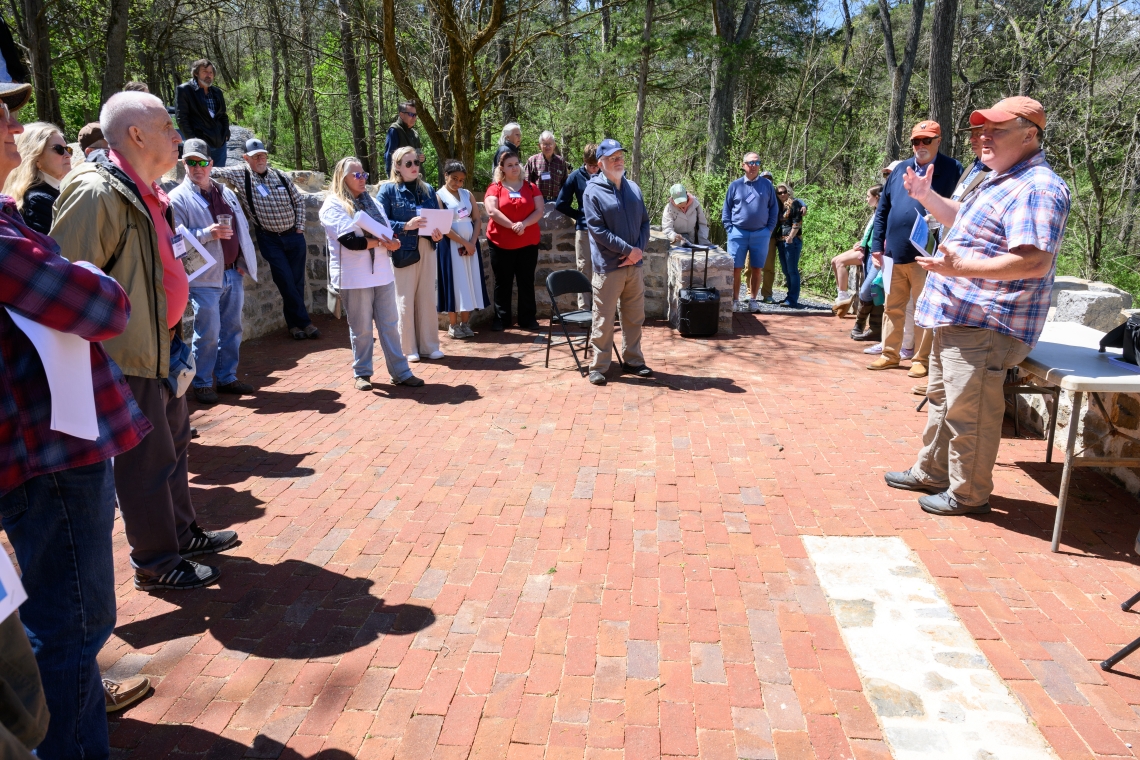 Research archaeologist and instructor of archaeology Don Gaylord speaks to attendees during the reunion’s “Lunch and Learn” event at The Foundation, located near Liberty Hall Ruins.
Research archaeologist and instructor of archaeology Don Gaylord speaks to attendees during the reunion’s “Lunch and Learn” event at The Foundation, located near Liberty Hall Ruins.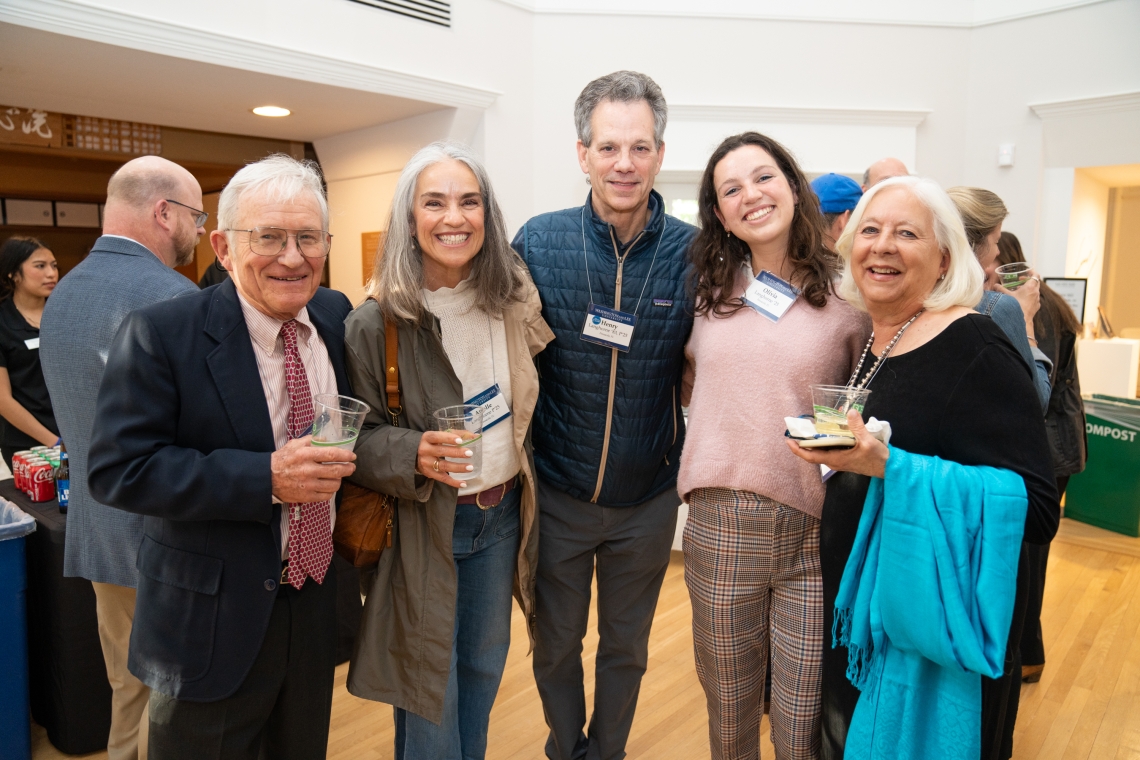 John McDaniel, Arielle Langhorne, Henry Langhorne ’83, Olivia Langhorne ’25 and Nell McDaniel at the archaeology reunion weekend’s welcome reception.
John McDaniel, Arielle Langhorne, Henry Langhorne ’83, Olivia Langhorne ’25 and Nell McDaniel at the archaeology reunion weekend’s welcome reception.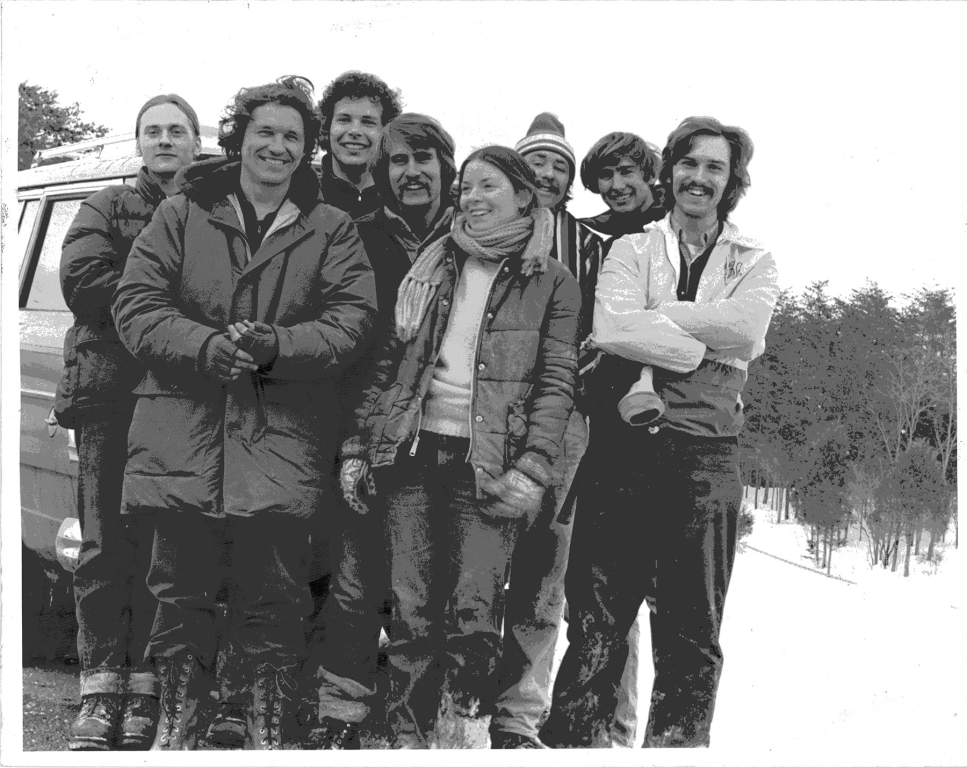 John McDaniel (second from left) and one of W&L’s early archaeology teams in the winter of 1978.
John McDaniel (second from left) and one of W&L’s early archaeology teams in the winter of 1978.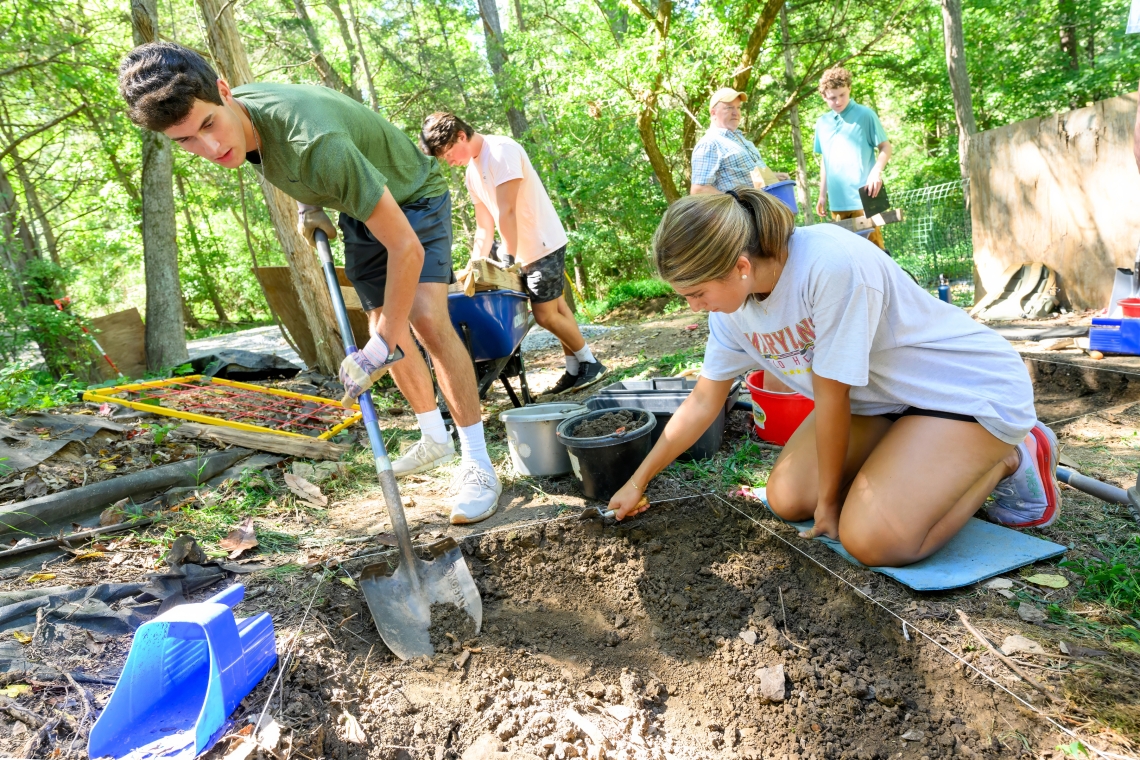 Students on the archaeology pre-orientation trip work in a dig site behind the Liberty Hall Ruins.
Students on the archaeology pre-orientation trip work in a dig site behind the Liberty Hall Ruins.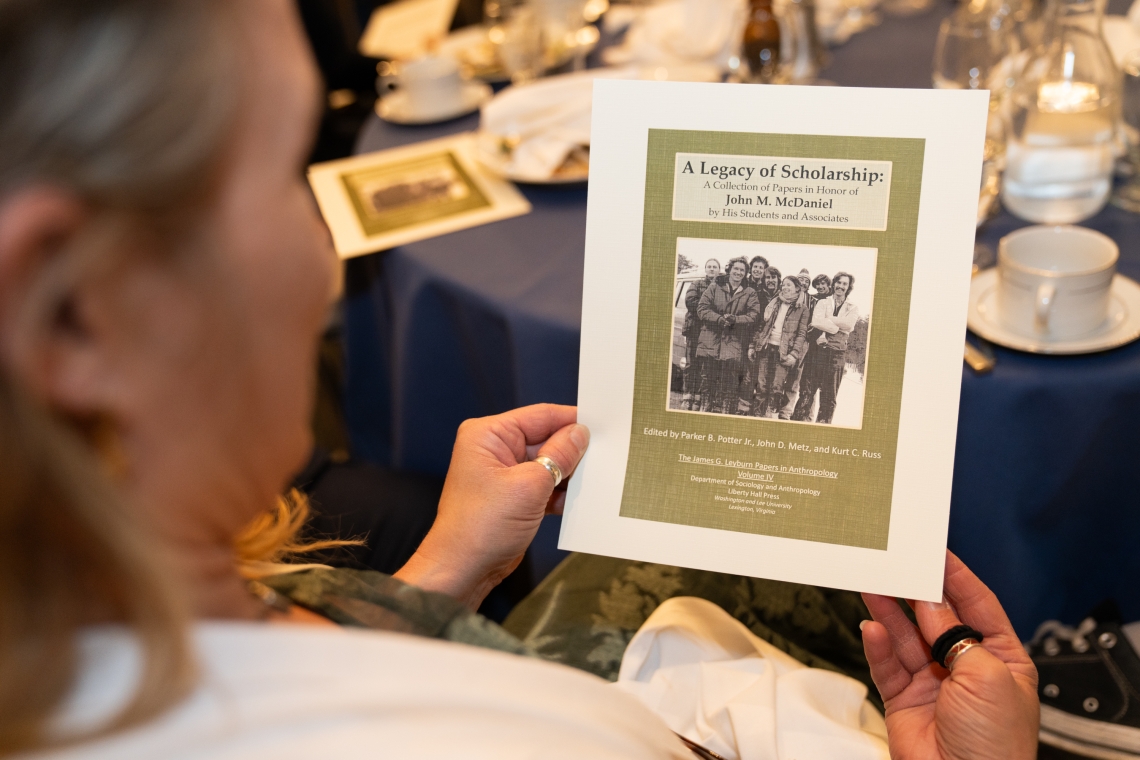 Catherine Matthews, daughter of John and Nell McDaniel, holds a copy of the cover of the forthcoming volume of the James G. Leyburn Papers in Anthropology.
Catherine Matthews, daughter of John and Nell McDaniel, holds a copy of the cover of the forthcoming volume of the James G. Leyburn Papers in Anthropology.
You must be logged in to post a comment.